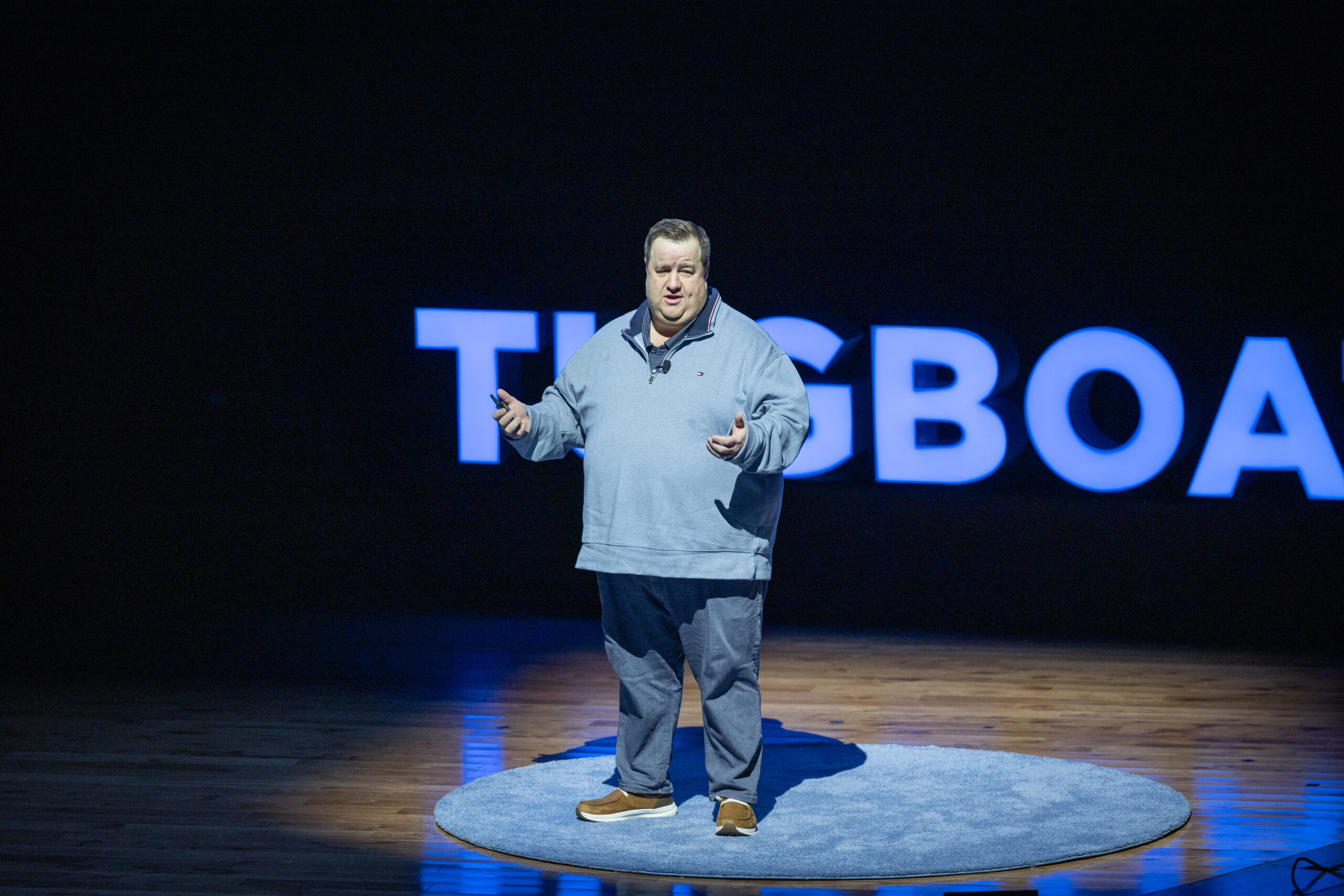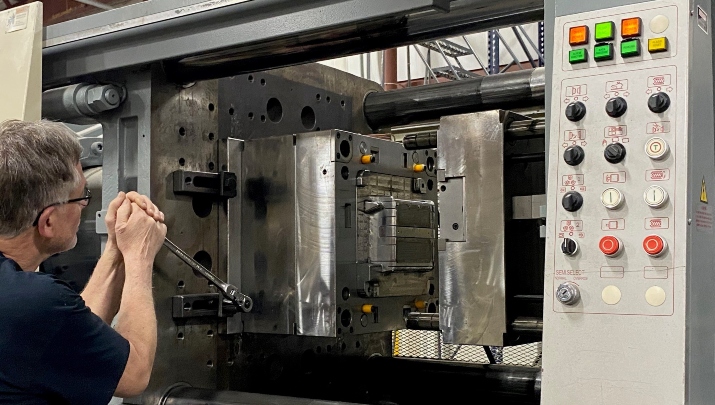

Find the Tool That Will Help You Grow
- Aaron Ludwig
- Jack Brown's Beer & Burger Joint
I started Jack Brown’s Beer & Burger Joint in 2009 with my childhood best friend Mike Sabin. We were both feeling at the end of our ropes with our jobs at the time, and I called him after one particularly bad day. In the space of one conversation, we decided, let’s finally open the bar together?! Initially, we just thought it would be fun to run a bar for a while. We never imagined it would turn into what it has become today: a company with multiple locations across Virginia, North Carolina, South Carolina, Alabama, and Tennessee, with over 500 employees.
The early days were wild and fun, and we learned as we went. Eventually, however, as we started to experience success and grow, and especially when we surpassed 10 locations, we started to see signs of the issue that all small companies face as they scale – we were outgrowing our initial systems and processes and seeing decreases in efficiency and profits across the board. In fact, one day our President, Jason Owenby and I realized that we were making more profit with five stores than we were with ten. It was time for a change, but we didn’t have a comprehensive plan.
Our team and I had been working on solutions for about a year. Then I attended Tugboat Institute®’s Gathering of Teams in Nashville, and saw Bob Sutton speak. He was there talking about his recent book, The Friction Project, which I subsequently read and appreciated. Soon after, I mentioned his name to one of my regional managers, Joe Fowler, who suggested another one of his books, Scaling Up Excellence, which Bob had also co-authored with Huggy Rao. Luckily for us, it turned out to be a key tool in our efforts to scale.
While we never rolled the book out company-wide, it came at just the right time for me and the Leadership team and helped us in three distinct ways. First, it validated some of the steps we had already taken to change and confirmed that our instincts were on track and correct.
Second, it strengthened our resolve to press forward with some other initiatives that we were considering or that we had recently launched. And finally, it gave us some new ideas for ways we could improve that have ended up being pivotal for Jack Brown’s. Again, while we did not adopt every little thing the book suggested, the insights that helped us the most fell into three key categories: identifying and removing inefficiencies, reinforcing the right initiatives, and flattening the organizational structure.
As we’d grown, like many other organizations, when new issues presented themselves, we looked for and implemented a solution – to that specific problem. The problem was that this approach was almost entirely additive; over time, we found that we had accumulated a great many subscriptions, software programs, platforms, and processes that were unique and that served to handle one small part of our larger system.
The multiplying of a million singular solutions for each little problem creates a serious drag on efficiency. In his book, Sutton calls this “barnacles on the ship,” and his metaphor explains how they latch on individually and contribute to a general slowing down of progress. This was happening for sure. After reading the book, I realized we needed to get to work removing barnacles. Even better, I realized that we had a new initiative underway that was aimed at doing precisely this!
Our Director of Ops, Scott Krezmer, had recently undertaken the creation and implementation of something he called the Backpack. The Backpack is a central repository on the company’s internal website that houses everything managers need: marketing materials, scorecards, recipe guides, and inventory sheets. He even built an internal AI assistant – a golden cat, actually – that sits in the back end of our website and that can answer questions managers have about how the system works, where everything lives, etc. In short, the Backpack seeks to consolidate our many, diverse processes in one place, and streamline our systems. Scaling Up Excellence did not give us this idea, but it confirmed that we were on the right track, removing barnacles.
Another lesson we found in the book, and that spurred us to make some changes that were not already underway, were lessons about flattening the organization. Over time, we had created a pretty complicated communication structure, and as a result, the number of meetings created to make sure everyone was up to speed had multiplied. We had multiple layers of management and communication was neither simple nor speedy. This obviously led to delays and inefficiencies, and we realized we had a hierarchy problem.
The fix for this turned out to be relatively simple. Our leadership team began sitting in on regional manager meetings. This simple change dramatically improved communication, removed multiple players from the communication chain, allowed us to eliminate a great many meetings, and allowed decision-makers to hear concerns directly and respond in real time. Mike and I also launched the JB’s Founders Podcast for our team where we discuss company goals and ideas, share recent successes and celebrate our employees. Plus we get to share the fun and wild stories that come from running 20 bars.
A final lesson that has proven pivotal was around our team itself. We have always prided ourselves on being People First above all else, and of taking great care of our team. We realized, through reading this book, that we had perhaps taken this too far. Our joints were operating almost independently of one another. And in certain cases allowed people to stay who were not a good fit for the organization, in the name of being ‘good to our people.’ Sutton advised leaders to put the right people in the right seats. The work we had done on streamlining our systems allowed us to better articulate to our team what we stood for and what mattered to us, which in turn made it easier to identify areas where misalignment had set in. These changes led to a morale boost for everyone because they understood that we were willing to make difficult decisions for the good of the team.
As I look back on the lessons of the last year and the changes we’ve made, I can see clearly that we did the classic thing that growing businesses do. When we were small, we made a commitment to our People, and People First was the primary lens through which we evaluated all of our initiatives, our growth, and our decisions. When we finally realized that this had started to cost us significantly in terms of profits and efficiencies, we swung the pendulum the other way and entered a phase of hyper-focus on the numbers, KPIs, etc, at the cost, it turns out, of hurting some of our People First culture and programs. Scaling Up Excellence was the right tool at the right time for us because it helped us swing back the pendulum toward the middle.
And it’s working! In the past year, we’ve seen our culture and our purpose pervade the team much more powerfully and uniformly than it ever had, and we’ve seen profits increase significantly. Sutton also discussed creating a “common heartbeat” in a company, and seeking, as you grow, to build a “malleable prototype.” We’re only 16 years old and still learning. And in this line of work, the only thing that will remain constant, is change. We wanted to create a vision that everyone could align with, where they still had freedom, but within clear guardrails that defined what it means to be part of Jack Brown’s. We are looking through this lens now as we move into our next phase, and the difference is palpable. As we moved through all these changes, we took a year off from opening new stores to focus on getting our foundation right. Now, we feel more confident than ever as we prepare to open three new locations this year.
I am not saying that the book I read and what worked for us is the answer to every founder’s challenges as they face the problems that come with scaling. But if you are in this place, I do recommend that you look around for a tool that works for you. Whether it be a book, a consultant, or even a Tugboat talk, sometimes it helps a lot to feel you have some advice to lean on and at least the sketch of a path forward. It’s not easy to scale without losing what made you successful in the first place, but it’s the only path to long-term survival. We’ve been fortunate; by embracing a balance between structure and flexibility—between numbers and people—we are finding that growth doesn’t have to come at the expense of culture or profits. Instead, with the right approach, it can strengthen both, and more.

Get Evergreen insight and wisdom delivered to your inbox every week
By signing up, you understand and agree that we will store, process and manage your personal information according to our Privacy Policy






